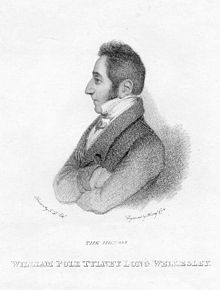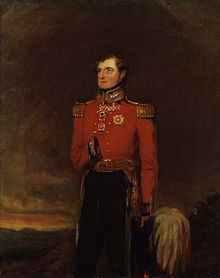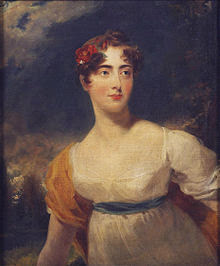Regency Personalities Series
In my attempts to provide us with the details of the Regency, today I continue with one of the many period notables.
Lieutenant-General Arthur Richard Wellesley 2nd Duke of Wellington
3 February 1807 – 13 August 1884

Arthur Wellesley
Arthur Wellesley 2nd Duke of Wellington was born at Harley Street, Soho, London, the eldest son of Arthur Wellesley, 1st Duke of Wellington, and the Honourable Catherine Sarah Dorothea “Kitty” Pakenham, daughter of Edward Pakenham, 2nd Baron Longford. Lord Charles Wellesley was his younger brother and Lord Wellesley, Lord Mornington and Lord Cowley his uncles. He was educated at Temple Grove School, Eton College, Christ Church, Oxford, and Trinity College, Cambridge. He became known by the courtesy title Lord Douro when his father was created Earl of Wellington in 1812 and as Marquess of Douro in 1814 after his father was elevated to a dukedom. He was a Page of Honour from 1818 to 1821.
Lord Douro became an ensign in the 81st Regiment of Foot in 1823 and in the 71st (Highland) Regiment of Foot in 1825, a cornet in the Royal Horse Guards in 1825, a lieutenant in the Royal Horse Guards in 1827, a captain in the Royal Horse Guards in 1828 and in the King’s Royal Rifle Corps the same year, a major in the King’s Royal Rifle Corps in 1830 and in the Rifle Brigade in 1831, a lieutenant-colonel on the unattached list in 1834, a brevet colonel in 1846, a lieutenant-colonel in the Victoria (Middlesex) Rifle Volunteer Corps in 1853 and a major-general in 1854.
Lord Douro was returned to parliament for Aldeburgh in 1829, a seat he held until 1832. He was out of parliament until 1837, when he was returned for Norwich. In 1852 he succeeded his father in the dukedom and entered the House of Lords. In early 1853 he was sworn of the Privy Council and appointed Master of the Horse in Lord Aberdeen’s coalition government, a post he retained when Lord Palmerston became prime minister in 1855. He resigned along with the rest of the Palmerston government in 1858. The latter year he was made a Knight of the Garter.
In 1863 Wellington inherited the earldom of Mornington on the death of his cousin William Pole-Tylney-Long-Wellesley, 5th Earl of Mornington. From 1868 to 1884 he was Lord-Lieutenant of Middlesex.
Wellington married Lady Elizabeth Hay, daughter of Field Marshal George Hay, 8th Marquess of Tweeddale, in 1839. They had no children. The marriage was not a happy one although Lady Elizabeth was a great favourite with her father-in-law. On succeeding his illustrious father he was said to have remarked: “Imagine what it will be when the Duke of Wellington is announced, and only I walk in the room.” The relationship between father and son is often described as the classic case of the son of a famous father who is never able to live up to his legacy. Wellington died at Brighton Railway Station, Brighton, Sussex, in August 1884, aged 77, and was buried at the family seat Stratfield Saye House, Hampshire. He was succeeded by his nephew, Henry. The Duchess of Wellington died at Bearhill Park, Walton-on-Thames, Surrey, in August 1903, aged 83, and was buried at Stratfield Saye House.






































